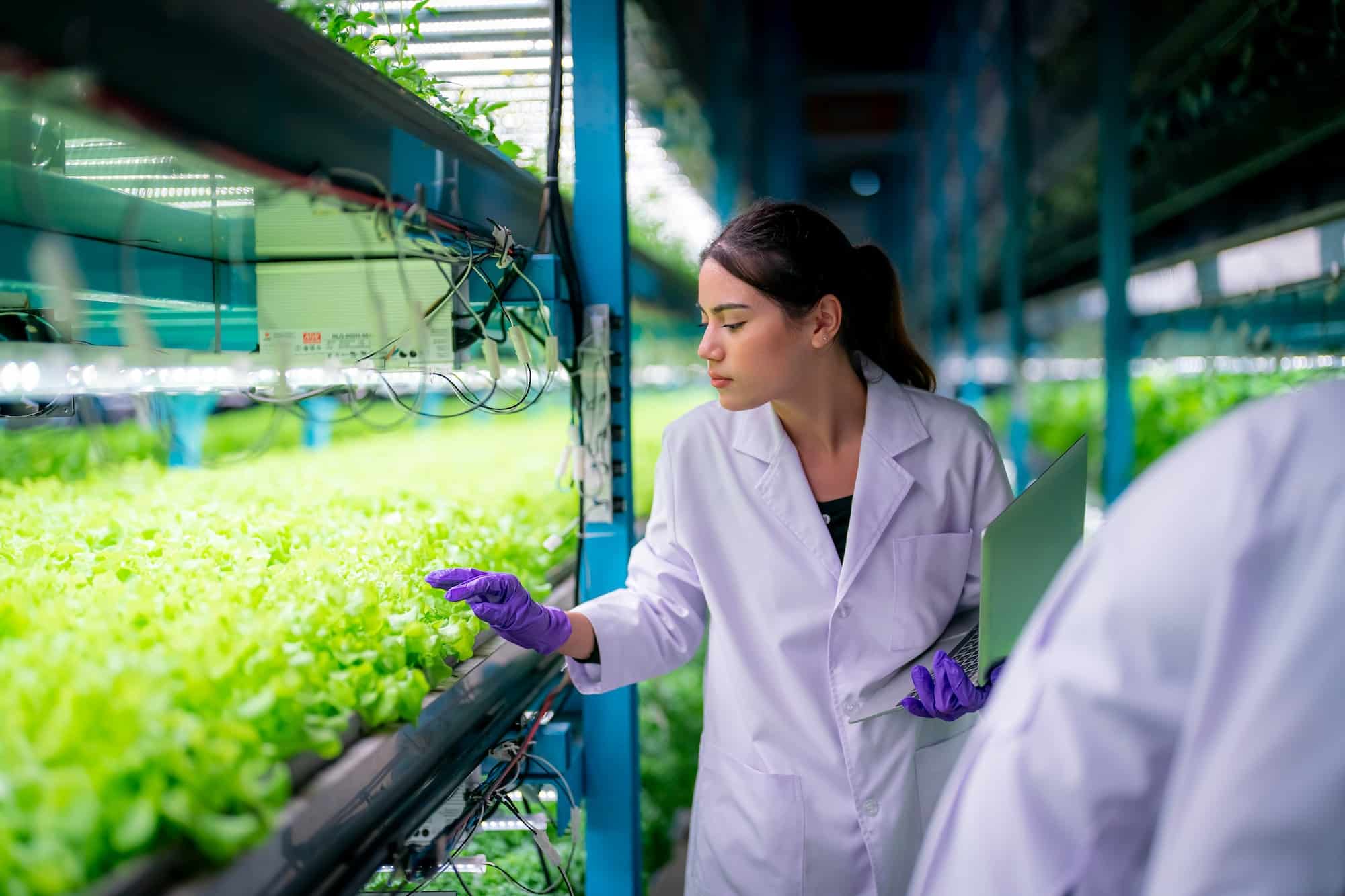In the hustle and bustle of city life, one may not readily associate urban areas with farming. However, as the need for sustainable methods to feed the ever-growing population increases, the importance of creative farming solutions has never been more apparent. One such solution is indoor vertical farming, a type of urban agriculture that maximizes the use of space to produce nutritious crops.
This article explores how indoor vertical farming bridges the gap in nutritional sufficiency, especially in urban food deserts where fresh, healthy produce is scarce. We will delve into the science, sustainability, and security this innovative form of farming offers, and how such methods can revolutionize our current food production systems.
Avez-vous vu cela : Can a High-Intensity Interval Training (HIIT) Program Improve Heart Health in Diabetics?
Reimagining Farming in Urban Areas
The concept of farming, for many, conjures up images of vast, open fields with rows of crops under the clear, blue sky. The reality in urban settings, however, is starkly different. Limited open spaces, high population density, and a pressing need for fresh produce give rise to innovative farming systems.
Indoor vertical farming is an innovative way of growing crops in city environments where space is at a premium. This method involves stacking layers of crops in a controlled environment to maximize production. Vertical farms can be set up in a variety of urban spaces, from repurposed warehouses to high-rise buildings, making them a practical solution to the food security issues faced by many cities. They utilize advanced technologies such as LED lighting, automated monitoring systems, and hydroponic or aeroponic systems to optimize crop yields.
Dans le meme genre : How Does Participation in a Digital Detox Camp Affect Adolescent Social Skills Development?
Water-Efficient and Sustainable Farming Systems
Sustainability is a significant concern in current farming practices. Traditional agriculture can consume vast amounts of water, contributing to water scarcity in many parts of the world. However, vertical farming offers a more sustainable alternative.
Indoor vertical farms are equipped with hydroponic systems that circulate nutrient-rich water around the roots of the plants, substantially reducing the amount of water needed for crop growth. Some vertical farms even employ aeroponic systems, wherein plants are misted with a nutrient solution, further optimizing water use. These systems not only conserve water but also eliminate the need for harmful pesticides, ensuring the production of healthy, eco-friendly crops.
Boosting Crop Yields in Controlled Environments
Maximizing crop yields is a pressing challenge in conventional agriculture. Weather conditions, pests, and disease pose constant threats to crop health and productivity. However, by moving farming indoors and vertically, these challenges become controllable variables.
In indoor vertical farms, every aspect of the growing process is controlled. From light exposure and temperature to humidity and nutrients, each variable is precisely managed to create optimal growing conditions. This control results in significantly higher crop yields compared to traditional farming methods. Additionally, the indoor environment shields crops from pests and diseases, reducing crop loss and increasing productivity.
Ensuring Food Security in Urban Areas
Food security is a major issue in densely populated urban areas. Many of these areas are considered "food deserts," where access to fresh, nutritious food is limited. Indoor vertical farming offers a promising solution to this problem.
By growing crops in city environments, vertical farms can provide fresh, local produce year-round. The proximity of these farms to consumers reduces transportation costs and time, ensuring a steady supply of fresh food. This form of urban agriculture can be a significant step towards achieving food security in cities, especially in areas where traditional farming is not feasible.
Encouraging Diversity in Crop Production
Finally, indoor vertical farming encourages diversity in crop production. In traditional farming, the variety of crops grown is often limited by local climate and soil conditions. However, in a controlled indoor environment, a wider range of crops can be grown, including those not native to the area.
This ability to diversify crop production can contribute to nutritional sufficiency. Different crops offer different nutrients, and a diverse diet is key to maintaining good health. By allowing for a wider variety of crops to be grown, indoor vertical farming can help ensure a more balanced and nutritious food supply for urban populations.
Innovation in Farming Businesses Rooted in Urban Areas
In recent years, as sustainability and food security become increasingly important, urban farming has emerged as a viable solution. More specifically, vertical farming businesses rooted in urban areas have proven to be a game changer.
In urban areas, open spaces are limited and often expensive, posing significant challenges for traditional farming. Vertical farms, however, offer an efficient solution to this problem. These innovative setups are typically housed in high-rise buildings, warehouses, or other urban structures. They utilize every inch of available space by growing crops in stacked layers within a controlled environment. This method of farming can drastically increase the quantity of food production per square foot compared to traditional farming.
To optimize crop yields, vertical farms make use of advanced technologies such as LED lighting, automated monitoring systems, and hydroponic or aeroponic watering systems. These technologies allow for precise control over each aspect of the growing process, from light exposure and temperature to humidity and nutrient levels. This level of control not only maximizes crop yields, but also shields the crops from outdoor pests and diseases, reducing crop loss and further enhancing productivity.
These farms are not only efficient, but they are also sustainable. With the use of hydroponic and aeroponic systems, the water consumption is down to a fraction of what it would be in traditional farming. These systems circulate nutrient-rich water around the plant roots or mist them with nutrient solution, reducing water usage dramatically. This sustainability aspect makes vertical farming an even more appealing solution to food production in urban areas.
Conclusion: Vertical Farming – A Catalyst for Nutritional Sufficiency and Food Security
As the world’s population continues to grow, so does the demand for fresh produce. This demand is particularly acute in urban areas where access to fresh, nutritious food can be limited. Vertical farming presents an innovative and practical solution to ensure food security and nutritional sufficiency in such areas.
Vertical farms in urban areas can provide fresh, local produce year-round. The proximity of these farms to consumers not only reduces transportation costs and time but also ensures that the produce remains fresh. The ability to grow a variety of crops, including those not native to the area, makes it possible to provide a diverse and nutritionally balanced food supply.
Indoor vertical farming is more than just a farming revolution – it’s a paradigm shift in the way we cultivate and consume food. The vertical farming industry has the potential to transform urban food deserts into vibrant, food-secure communities.
While vertical farms may not completely replace traditional farming, their incorporation into the urban landscape is a step forward in sustainable food production. As technology improves and more farming businesses root themselves in urban areas, vertical farming is poised to play an integral role in ensuring a sustainable, nutritious, and secure food future.
In conclusion, indoor vertical farming represents a promising solution to food production and security in urban areas. With its ability to maximize crop yields, conserve resources, and ensure a diverse and nutritious food supply, it is well-positioned to revolutionize urban agriculture and contribute significantly to global food security.






